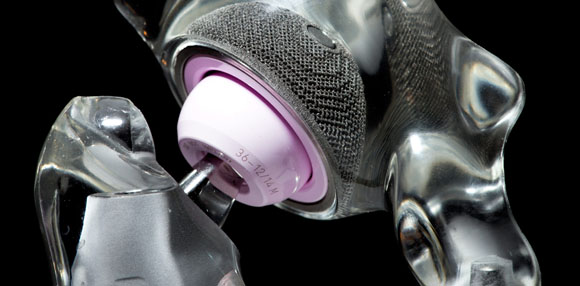Celebrating ten years of metal additively manufactured hip cups
March 7, 2018

Arcam’s Delta-TT Cup, first produced in 2007 (Courtesy GE)
The world’s first metal additively manufactured acetabular cup for use in a hip replacement was produced a decade ago this year, according to GE. The trabecular titanium AM hip cup was produced in 2007 by LimaCorporate and Arcam (now a GE Additive company), in partnership with Dr Guido Grappiolo, a surgeon at Italy’s Fondazione Livio Sciutto ONLUS.
The acetabular cup, named the Delta-TT Cup, marked the first venture into one of metal Additive Manufacturing’s most successful application areas. Since 2007, Arcam states that it has produced 100,000 hip cups on its own machines, and estimates that hundreds of thousands more have been made by other metal Additive Manufacturing companies.
Key to the success of metal AM implants is their ability to incorporate rough three-dimensional surface structures which imitate natural trabecular bone morphology, according to LimaCorporate.

Since 2007, Arcam states that it has produced 100,000 metal AM hip cups (Courtesy GE)
This encourages bone in-growth – wherein the patient’s bone ‘accepts’ the implant as a part of the skeletal structure and begins to grow into it, thereby enhancing patient success rates. This was made clear with the first Delta-TT Cup: a few months after the operation in which it was implanted, Dr Grappiolo reported that a CT scan already showed the patient’s bone to be growing into the hexagonal cells on the surface of the implant.
The lifespan of a conventionally manufactured hip cup implant typically ranges from ten to fifteen years, with the maximum lifespan considered to be twenty years, after which it must be replaced with a new implant in a second surgery. Having recently assessed the patient who received the first AM hip cup, Dr Grappiolo stated that he believes metal additively manufactured hip cups have the potential to last “a lifetime.”
















